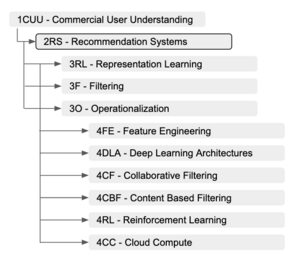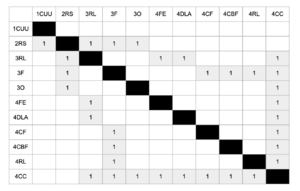Difference between revisions of "Recommendation Systems"
Jump to navigation
Jump to search
| Line 21: | Line 21: | ||
|- | |- | ||
| Engagement || Number of users who display interest in the recommendation provided. This depends on the implementation of the recommender system. An example of this could be clicks or views. || [user clicks] || Unknown if this has changed over time | | Engagement || Number of users who display interest in the recommendation provided. This depends on the implementation of the recommender system. An example of this could be clicks or views. || [user clicks] || Unknown if this has changed over time | ||
} | |||
==Technical Model== | ==Technical Model== | ||
https://github.mit.edu/ebatman/Recommender-System | https://github.mit.edu/ebatman/Recommender-System | ||
Revision as of 03:56, 30 October 2020
Roadmap Overview
Recommendation systems have become a critical engine of the modern digital economy, allowing businesses to exploit user behaviors and similarities to develop specific notions of preference and relevance for their customers. Today, recommendation systems can be found “in the wild” in many different services ubiquitous to daily digital life, filtering the content we see (eg Spotify, Tik Tok, Netflix), products we are advertised (eg Instagram, Amazon), and humans we connect to (eg Tinder, LinkedIn). Against the backdrop of Level-1 commercial user understanding or personalization, we develop a Level-2 roadmap for Recommendation Systems (2RS) below.
OPM Model
Error creating thumbnail: Unable to save thumbnail to destination
OPD of a Recommendation System
DSM Allocation
Figures of Merit
| FOM | Definition | Units | Trends (dFOM/dt) |
|---|---|---|---|
| User Base Size | Number of users and datapoints used to generate a recommendation | [users] | The number of users and datapoints has increased over time as databases of users and their preferences has grown |
| Accuracy | Degree to which the recommendation is relevant to the user. This depends on the implementation of the recommender system, but one example could be match percentage (Netflix, OkCupid) | [%, relevant content recommended / total content recommended] | It is not clear that the quality of recommendations has increased over time. |
| Quantity | Number of recommendations generated by the system for each user | [recommendations] | The number of recommendations systems can generate has increased as the amount of content in the system has increased |
| Engagement | Number of users who display interest in the recommendation provided. This depends on the implementation of the recommender system. An example of this could be clicks or views. | [user clicks] | Unknown if this has changed over time
} Technical Model |

